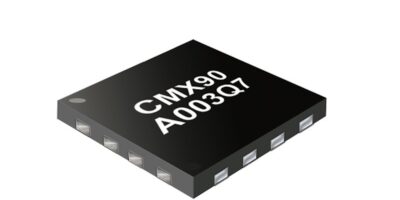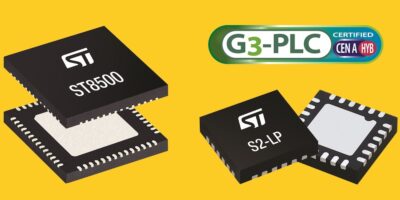At next week’s Live IEEE International Microwave Symposium (IMS), CML will introduce its SuRF (Semiconductor Microwave RF) family.
The family is CML’s range of high frequency, high bandwidth RFICs and MMICs for RF and mmWave applications. Devices have been designed to help accelerate the design of RF products operating in the mmWave and GHz frequencies.
Among the devices that visitors will see are the CMX90A003 (1W) and CMX90A004 (2W) 860 to 960MHz power amplifiers. These two-stage, fully matched MMIC power amplifiers deliver +29.5dBm (CMX90A003) or +32.5dBm (CMX90A004) of saturated power. Both devices use GaAs HBT technology. The CMX90A003 can be used as a booster power amplifier in sub-1GHz applications to extend the range of low power RF transceivers. The CMX90A004 is optimised to operate as a high-power final stage PA in wireless ISM applications.
There will also be the CMX90G301 (+1dB) and CMX90G302 (+2 dB) 1.4 to 7.1GHz positive gain slope amplifiers, designed to compensate for frequency related gain loss. They are based on GaAS pHEMT and combine low DC power, low noise and high gain in a cascadable MMIC.
CML will also be offering visitors the chance to learn more about the recently introduced CMX940 low-power Frac-N RF synthesiser. The CMX940 addresses the demand coming from OEMs for a high-performance, highly configurable RF synthesiser that can operate from 49 to 2040 MHz. It is claimed to deliver best-in-class phase noise and low levels of spurious products due to a high level of integration, which includes a wideband voltage controlled oscillator (VCO).
Due to Covid-19 restrictions there will be no live demonstrations during the in-person event in Atlanta, GA. A video demonstration of the CMX940 will be available, and SµRF evaluation boards will be on display.
Live IEEE International Microwave Symposium (IMS) takes place in Atlanta, Georgia, USA, between 7th and 10th June. CML will be exhibiting at booth 1341.







